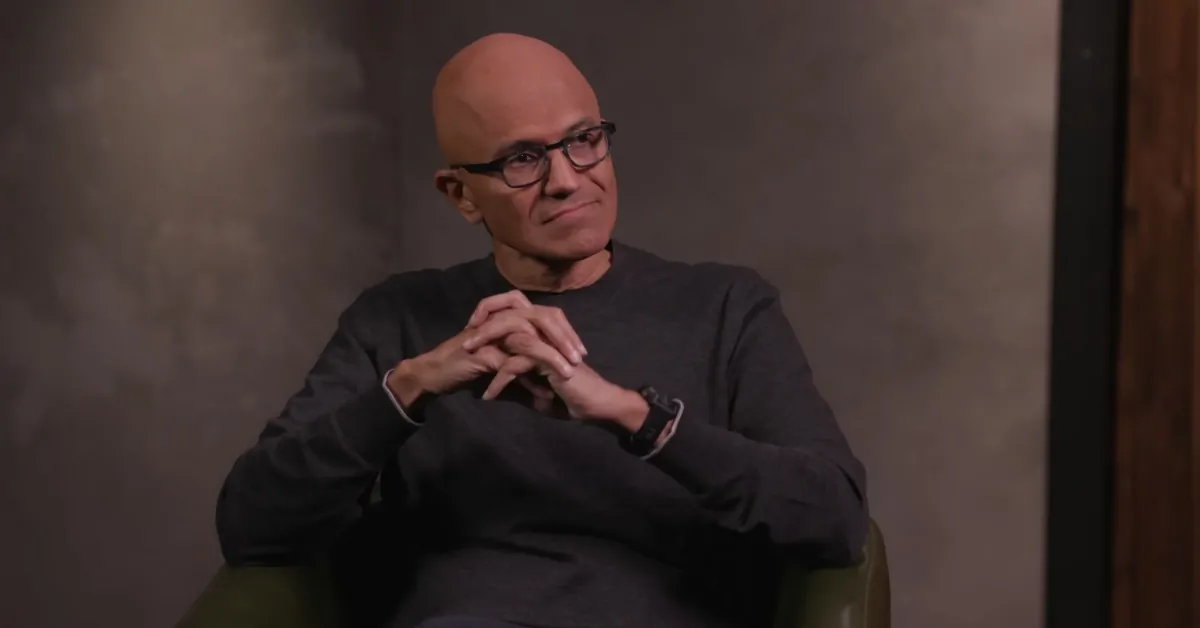Microsoft’s latest earnings announcement feels like a snapshot of how modern tech leadership works, brilliant in performance, uncomfortable in consequence.
I’ve followed Microsoft’s evolution for years, but this year’s headline still caught my attention: over 15,000 layoffs, followed by CEO Satya Nadella taking home $96.5 million, his highest compensation yet.
It’s not just a number; it’s a reflection of what kind of economy Big Tech is building in the age of AI.
Table of Contents
ToggleA Record Year With Uneasy Optics
Microsoft CEO Nadella’s 2024 pay rose 63% to $79 mln on stock awards https://t.co/Cn0Jvz7Nt3 pic.twitter.com/Za8AA8D2eM
— Reuters (@Reuters) October 25, 2024
According to the company’s SEC filing, Nadella’s total pay rose 22 percent year over year. About 90 percent of it is stock-based, directly tied to performance metrics.
The company earned $281.7 billion in revenue, up 15 percent, mostly driven by Azure’s AI infrastructure. From a results standpoint, that’s undeniable success. Microsoft stock climbed 23 percent this year, and its market cap briefly topped $4 trillion.
Still, I can’t help noticing how that growth was achieved alongside deep workforce reductions. Thousands of engineers, designers, and project leads were let go. For investors, those cuts look like a strategy. Employees feel displaced.
What the Job Market Is Actually Doing
If you track employment data across the sector, and I’ve spent the past months talking to laid-off tech workers, recruiters, and founders, the picture is complex. The tech job market is not collapsing, but it’s morphing.
Traditional roles are shrinking, replaced by specialized positions that revolve around automation, AI integration, and data infrastructure.
CompTIA data shows that U.S. tech employment overall fell 4 percent in 2025, yet job postings mentioning “AI” or “machine learning” rose nearly 20 percent.
Recruiters now tell me that data scientists, model-tuning engineers, and cloud security specialists are fielding offers with salaries 30 to 40 percent higher than last year.
Meanwhile, general software roles, once the bread and butter of tech employment, are thinning out fast.
Many of the people I interviewed after Microsoft’s layoffs didn’t stop working. They pivoted. Some joined smaller startups. Others became independent contractors or consultants, working across several companies at once.
The startup ecosystem is buzzing again, especially in Austin, Toronto, and Berlin, where ex-Big Tech talent is starting lean AI companies. The job market hasn’t disappeared; it’s just no longer built for stability.
How Investors and Boards See It
From an investor’s perspective, Nadella’s $96.5 million package makes sense. Microsoft outperformed its rivals, expanded its AI reach, and hit every target the board could measure.
Investors love efficiency, and AI delivers it in abundance. Layoffs, however harsh, signal to markets that the company is serious about optimization.
But the optics matter. When a company saves roughly $1 billion through workforce reductions and then awards its CEO nearly one-tenth of that in pay, it sparks questions about fairness, not just performance.
As one corporate governance researcher told me this week, “The system rewards the steward of the ship, not the crew that built it.”
Comparing Leadership Styles

It’s impossible not to compare Nadella’s pay structure to Elon Musk’s. Musk’s Tesla package, still under legal review, can reach $56 billion if all performance goals are met. Both men operate under a similar principle: tie compensation to value creation.
But Musk’s world is about visible engineering feats; Nadella’s revolves around invisible networks of AI models and data centers. Both drive extraordinary results, but they raise the same question: how far can executive success stretch from the realities of the job market below?
The Broader Shift
Big Tech is optimizing for growth without necessarily expanding opportunity. AI has given companies the power to scale productivity without scaling payroll. The numbers look good, but the balance feels off.
At the same time, the next chapter is already forming in the shadows. Former Microsoft engineers are building startups focused on automation tools for small businesses. Displaced cybersecurity teams are creating boutique firms.
Recruiters say the freelance AI market is growing faster than any traditional hiring segment. The layoffs that look destructive in the short term may be planting the seeds of innovation cycles, but it’s still early to tell who benefits most.
A Measured Conclusion
From where I stand, Nadella’s leadership is both a case study in modern efficiency and a warning about what’s being left behind.
His $96.5 million compensation doesn’t just reflect Microsoft’s success; it captures the shape of an economy where value creation and human employment no longer move in tandem.
As AI reshapes how work is measured and rewarded, the job market is splitting into two realities: one where a small group commands immense influence, and another where everyone else must constantly adapt.
And for anyone watching the numbers, it’s clear that the divide is no longer theoretical. It’s already here.
Related Posts:
- No New Timeline for Brockton Hospital’s Reopening After Fire
- Firearms Now the Leading Cause of Death for US…
- U.S. Plastic Surgery Trends 2025 - The Most…
- New York’s Population Could Drop by Almost 3 Million by 2050
- Idaho’s Population Crosses 2 Million, According to New Data
- World Population Grows by Over 71 Million in 2024,…








